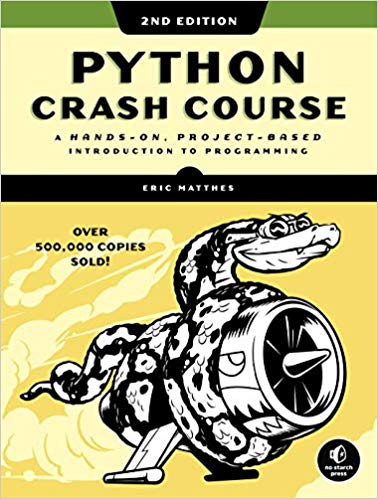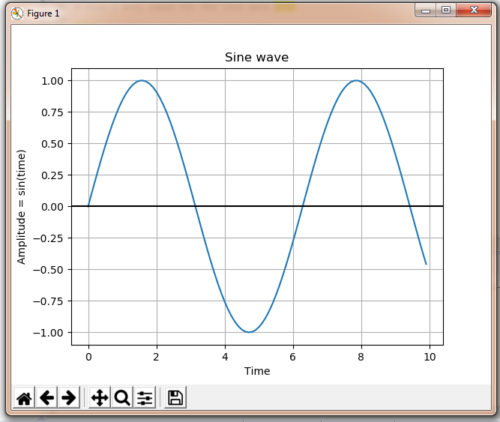Python is an easy language to learn. But if you want to learn Python as soon as possible, I suggest the book Python Crash Course. This book was my starting point, so let’s introduce it.

Learn how to code in Python from scratch using the most popular programming language.
With this book, you’ll start by learning the basics of coding and then move into more advanced topics like loops, functions, classes, and data structures. You’ll also learn to use Python’s powerful libraries, such as NumPy, SciPy, Pandas, Matplotlib, and Seaborn.
By the end of it, you’ll be able to build real applications and solve complex problems.
What makes this book so special? The projects
Python Crash Course quickly introduces Python programming to the basics using a project-based learning approach. It is focused on Python applications for websites, data visualization, and Raspberry Pi programming.
Eric Matthes’s Python Crash Course, now in its second edition, is one of the best books for beginners in Python programming. This book has a straightforward style and is full of examples.
While learning every programming language in detail takes time, the Python Crash Course speeds up the process by providing the basics of Python programming concepts.
Part I: The Fundamentals
The first part of the book Python Crash Course summarizes the key concepts such as variables, data structures, console, reading the user’s input data, lists, classes, functions, and text file operations.
At the beginning of each chapter, there is a brief overview of its content and what the reader will learn.
Then, it goes directly to the code. Not too much code, just a few lines, as an example. Later on, it explains the theory to get back to the code in the next paragraph.
Python Crash Course uses a friendly style: it combines theory and examples so the user can simultaneously learn and write the applications. There is no boring page of theory before the example, and there are no lines of code without explaining what it will solve.
After each concept is learned, there are some exercises to be solved by the reader…
The session ‘Try it yourself’ will challenge you to solve the concepts you have learned and take you out of your comfort zone.
Part II: Projects
After the introduction of the basic concepts of Python programming, the book introduces Part Two: Projects.
No extra time for theory. This section builds concrete applications:
- a video game with PyGame,
- a Django website,
- data visualization with mathplotlib.

These projects will introduce the reader to the flexibility to build real applications, not minor problems like “Print all numbers between 1 and 100, which divided by 3, the remainder will be 1.”
Perhaps PyGame is not of much interest to the Bachelor of Computer Sciences student. Still, the other two projects, which will build a graphical statistics application and a Django framework website, are perfect for them.
In conclusion, I can suggest this efficient book to all beginners in Python programming who do not like to waste time with 1000 pages of theory but will instead switch directly to concrete applications.

